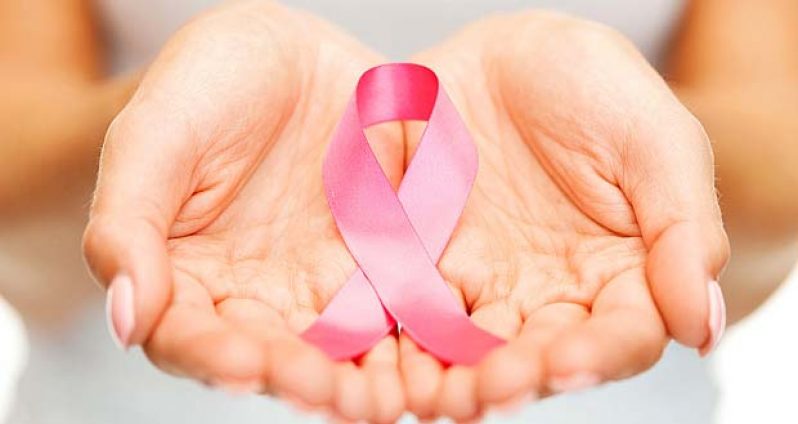NO, REALLY, it was. While everyone around me prepared ginger beer and mauby, there I was, steeping leaves from a soursop plant -– one of the first natural treatments I started a few days after hearing the words no woman wants to hear: “You have breast cancer.”The biopsy, which had been dated incorrectly (this is what happens when you copy and paste too much), was inconclusive in terms of being able to stage my cancer, but it was able to determine the bare minimum — cancer, not very minimal at all, actually.
To describe how I reacted would be false, because it’s a blur to me; my post-surgery doctor’s interactions I remember quite well, but this I am a bit lost about. The brain has a way of suppressing or substituting bad memories; I’m sure my brain filed it within a folder within many folders inside my subconscious; but for what it’s worth, I didn’t freak out. I do remember my doctor starting to discuss that my treatment would most likely entail chemo and radiation. Hearing those words brought on an intense feeling; it finally hit home: I have cancer, like I really have cancer — no joking, no mistaking. Here, at 28 years old, I was being diagnosed with cancer, which the doctor felt was close to a stage two because of how rapidly developed and large the tumour had become, and the information about ‘margins’ in the biopsy report. He suspected that my cancer may have been caused by genetic factors. I was advised that I could request slides or blocks of my tumour from the GPHC lab for testing at a private facility. I decided I needed to do that because the biopsy results from the GPHC lab seemed to leave a lot to be desired by the slew of oncologists who would have examined it, and I was taking no chances with it.
Suppose they had made a mistake?
They got the date horribly wrong after all, an entire two months’ difference. At this point, I would also have to start meeting oncologists who specialized in chemotherapy and/or radiation treatments, since my doctor was a surgical oncologist.
That December, I was not just searching for the best Christmas presents, but also for the best oncologists, with whom I could start discussing my treatment options. I met with about four doctors — some of whom came personally recommended. The thing about getting second, third and fourth opinions is the repetition of information; I was getting to the stage where I was confused about what to do.
One doctor in particular bashed the chemotherapy treatment offered at the GPHC’s Oncology Department. He told me I would pretty much be dead if I chose that option, and at one point went as far as to suggest that my mother didn’t care enough about me and thus does not want to take his advice. Horrible, I know. When I met with doctors, I would have to ask: ‘Does this doctor care about me, or does he have a monetary interest in my health?’ as unethical as that sounds I have found in my medical experiences in Guyana that ethics don’t always apply.
For instance, there is an institution that deals primarily with cancer patients, and they no longer accept medical tests from other institutions except their own. This is unfair to those of us who may be coming for a second opinion from another hospital or medical institution, where we would have already completed, just days before, the exact tests the institution requires. In fact, the notice at this facility is addressed to doctors, advising that they not accept tests from other facilities except their own. Mind you, this institution’s costs for tests, CT scans etc are ‘off the chain’. These costs are at least twenty thousand dollars more than what obtains at other private hospitals. I find it unethical and uncaring to request the same tests to be done at their institute, as opposed to using recent results from a competent facility. Fees for medical tests are quite high, so to ask a patient to spend the same or even more is callous and unjust.
I received the tissue blocks from the GPHC Lab in a timely and friendly manner, and sent them for further testing at the Mt. Sinai Hospital in Canada. I was advised to test for the BRCA gene by at least three of the oncologists I had met with.
The following information is scary, and I wish it were possible for both men and women to get tested for this early in their lives, so they would be able to employ preventative medical treatments. Knowing how close you may be to having cancer at some point in your life is a motivational factor in making the best decisions for your body health-wise. Knowing can make all the difference in how much meat you consume, how active you are, and many other simple choices we make daily which can have seriously adverse effects if one is a carrier of this gene.
“BRCA1 and BRCA2 are human genes that produce tumour suppressor proteins. These proteins help repair damaged DNA, and therefore play a role in ensuring the stability of the cell’s genetic material. When either of these genes is mutated or altered, such that its protein product either is not made or does not function correctly, DNA damage may not be repaired properly. As a result, cells are more likely to develop additional genetic alterations that can lead to cancer.
Specific inherited mutations in BRCA1 and BRCA2 increase the risk of female breast and ovarian cancers, and they have been associated with increased risks of several additional types of cancer. Together, BRCA1 and BRCA 2 mutations account for about 20 to 25 percent of hereditary breast cancers (1) and about 5 to 10 percent of all breast cancers (2).
In addition, mutations in BRCA1 and BRCA2 account for around 15 percent of ovarian cancers overall (3). Breast and ovarian cancers associated with BRCA1 and BRCA2 mutations tend to develop at younger ages than their nonhereditary counterparts.
A harmful BRCA1 or BRCA2 mutation can be inherited from a person’s mother or father. Each child of a parent who carries a mutation in one of these genes has a 50 percent chance (or 1 chance in 2) of inheriting the mutation. The effects of mutations in BRCA1 and BRCA2 are seen even when a person’s second copy of the gene is normal. As I waited for the results from Mt. Sinai, I scheduled a CT scan to determine how much of my body was being affected by the cancer cells. This scan was just a taste of what would soon become the norm as my life began as an oncology patient.



.jpg)











